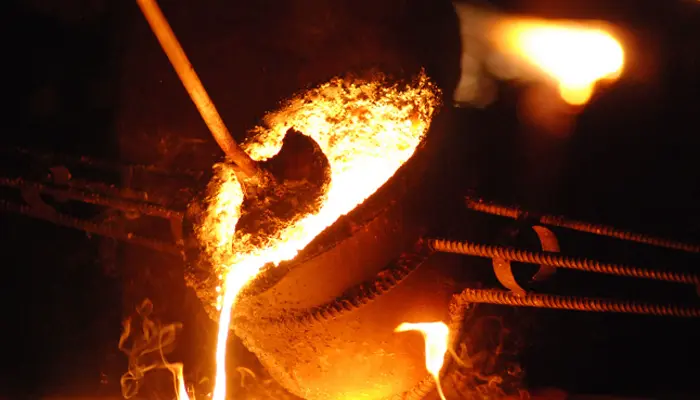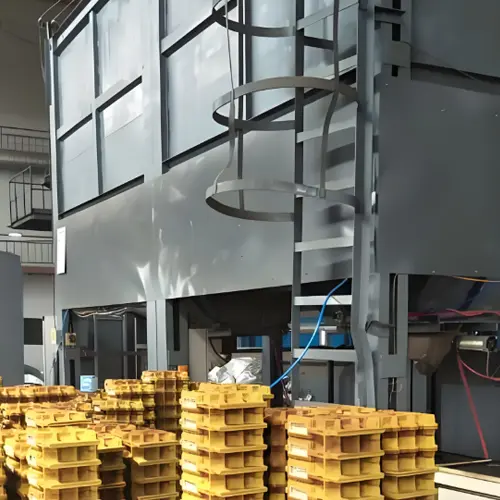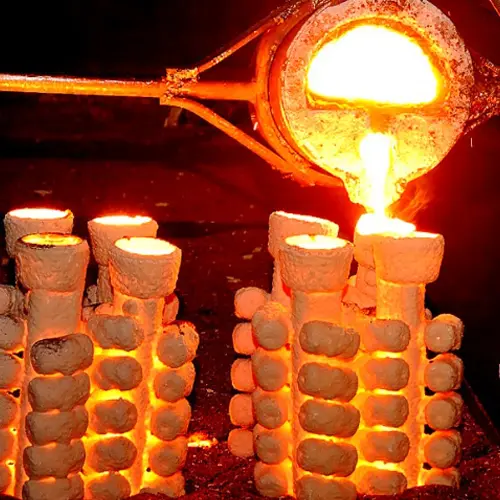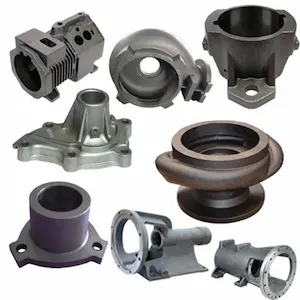

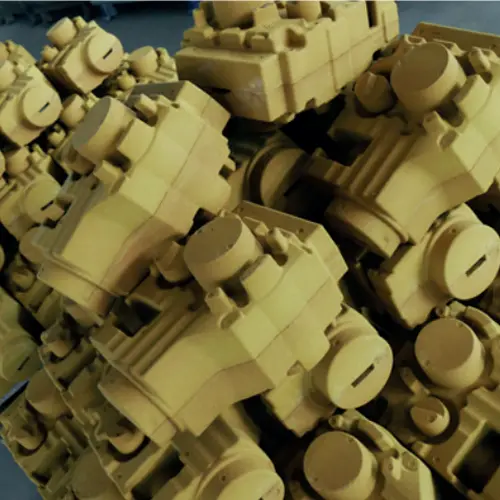
The sulfur content in the raw iron liquid used for ductile iron is very low, and it is often necessary to carry out desulfurization outside the furnace, so it is difficult to stably control the sulfur content within a very narrow range. The oxygen content in the raw iron liquid is also difficult to accurately control. Therefore, when producing ductile iron parts, sulfides and oxides should be used as foreign crystal nuclei of spheroidal graphite. One of the feasible methods is to combine sulfur, oxygen, cerium and calcium in the inoculant.
Inoculants suitable for ductile iron containing multiple elements such as cerium, calcium, sulfur and oxygen have long been available in Europe, and there are products of various specifications to adapt to different production conditions. The main component of this type of inoculant is still silicon, but it is equipped with fine and dispersed oxides and sulfides, so the appearance is mostly black granular.
After this inoculant is added to the molten iron, cerium and calcium react with the sulfur and oxygen contained in the inoculant itself, and also react with the residual sulfur and oxygen in the molten iron to produce sulfides, oxides and sulfur-oxygen complex compounds. These compounds can also serve as foreign nuclei of spheroidal graphite and play an important role in the nucleation of graphite. Cerium can also react with other trace elements to form stable intermetallic compounds and inhibit their harmful effects.
Because this type of inoculant contains cerium and calcium, the sulfides, oxides and sulfur-oxygen complex compounds produced have good stability. When used in ductile iron, they can be added as pretreatment agents before magnesium treatment. After adding magnesium, most of them can still be maintained and will not be reduced by magnesium.
Because this type of inoculant contains sulfur and oxygen, even after magnesium treatment, when the sulfur and oxygen content in the molten iron is very low, sulfides, oxides and sulfur-oxygen complex compounds can be formed as foreign nuclei of graphite. Therefore, it can also be used for instantaneous inoculation during the casting process after spheroidization.
Application of inoculants containing sulfur, oxygen, cerium and calcium
1. Used for pretreatment
In order to achieve the best effect of the application of new inoculants, a treatment method that is suitable for its characteristics must be adopted. At present, the three-step treatment method (i.e. pretreatment, spheroidization and inoculation) is more effective.
Before adding magnesium for spheroidization, the molten iron is pretreated with a new inoculant. The introduced cerium and calcium not only combine with sulfur and oxygen in the inoculant itself to form compounds, but also react with sulfur and oxygen in the molten iron to further deoxidize and desulfurize the molten iron. Both conditions are very favorable for the spheroidization of graphite.
The amount of inoculant added for pretreatment is calculated according to the cerium required to be added. Theoretically, if external conditions such as temperature and pressure are not considered, the amount of cerium added is mainly determined by two factors:
· The amount required to form stable compounds with sulfur and oxygen;
· The amount required to combine with harmful elements such as titanium, lead, and bismuth or form intermetallic compounds.
In actual production, it is difficult to accurately grasp the above two aspects of information, and the content of harmful elements is often unpredictable, and their state in the molten iron is also unknown. However, experiments conducted under production conditions show that, in general, with the new inoculant as a carrier, the amount of cerium added is 0.002-0.006%.
Bismuth has the effect of degrading the shape of graphite in ductile iron and is generally considered to be a harmful element. However, under the condition that the inoculant contains cerium, cerium and bismuth can combine to form a large number of crystal nuclei, making the graphite spheres small. For ferritic ductile iron (such as QT 400-18L) that requires low-temperature impact toughness, it is very beneficial to add a small amount of bismuth while adding a cerium-containing inoculant. If it is necessary to add bismuth, a rare earth ferrosilicon alloy containing bismuth can be used, and the amount of alloy is calculated based on 0.001-0.002% bismuth. After pretreatment, the molten iron should also be spheroidized and inoculated.
The pretreated molten iron can not only reduce the amount of magnesium due to the reduction of sulfur and oxygen content, but also has another factor that promotes the spheroidization of graphite, that is, the surface tension at the interface between the molten iron and the graphite is greatly increased. The surface tension of the molten iron is also one of the important factors affecting the spheroidization of graphite. In order to make the graphite precipitate in a spherical shape, the surface tension at the interface between the molten iron and the graphite must be very high. The sulfur and oxygen dissolved in the molten iron are important factors in reducing the surface tension at its interface. After pretreatment, the cerium and calcium in the inoculant can remove the sulfur and oxygen in the molten iron to a very low level, almost doubling the surface tension. Therefore, the amount of magnesium added during spheroidization can be reduced, and the residual magnesium content can still maintain normal spheroidization when it is below 0.03%.
After pretreatment and magnesium addition, the molten iron still has a certain oxygen content. Inoculation treatment is necessary to ensure a large number of graphite balls and good roundness. Under this condition, the inoculant can be 75 ferrosilicon.
2. For instantaneous inoculation
If the molten iron after spheroidization and inoculation is kept for a long time, its nucleation ability will be greatly weakened, resulting in various quality problems in the castings. If a new inoculant is used for instantaneous inoculation during the pouring process, it will have a strong nucleation effect. Moreover, test results show that the use of this inoculant can make the graphite balls large and small in size, with a bimodal distribution, which helps to reduce shrinkage defects.


